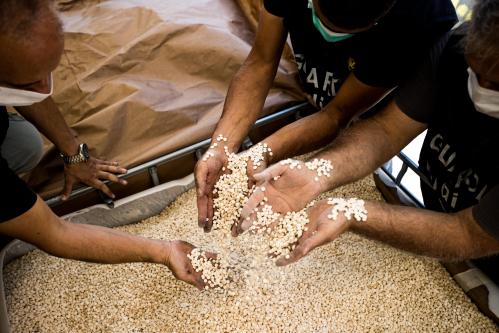STEPHEN COHEN: I think what is very disturbing is that while this is the region with the largest population under democratic rule, it has become one of the most violent regions in the world. This is true of India and India’s neighbours.
India has always had the international reputation of being a state of non-violent political activity. But you don’t see much of it here. There is a lot of coercion, intimidation, money power here. I won’t say it’s very disheartening, but it’s a fact of life we have to recognise. The Indian military, for example, has been involved in paramilitary or counter-insurgency operations against Indian citizens for a number of years — beginning with the Nagas, right up to the present.
I’m not quite sure if there’s an exact cause. But clearly one cause is being hit by globalisation — in India in particular and also in other South Asian states. I’d say even more so in the northwest frontier of Pakistan. Traditional societies are being opened up to the world and some of them can adjust, but some just go haywire. Young people between the age of 16 and 22 years are attracted to violent non-parliamentarian means of protesting and pursuing their interests. That, of course, involves a challenge to the state. This is common everywhere. In Nepal we have seen a revolution. In Pakistan the tribal area is being cracked open like an eggshell to globalisation, which takes the form of radical Islamisation and revival of traditional (in this case, Pashtun) identities.
This is a common problem in the region. Yet look at India, and compare the rest of the region with 15 years ago, and you see there has been amazing economic growth.
But the trouble is that growth is uneven. I see a Bentley distributorship at Ashoka Hotel, something that just blows my mind. And I see people living in hovels in sub-human conditions on the outskirts of Delhi.
Now the Americans generally tend to see the positive side of India. You have a large number of Americans, sometimes the NRIs, who are essentially cheerleaders for India. India can do no wrong and India is a wonderful country and India is an excellent counter to China. India is the place to put your capital to grow your money. All of that is true. But India is still a country where over half the world’s poor are living. And some of them are not better off than they were before. I think we all have trouble understanding the contradictions in society. India is fascinating because it presents us with these contradictions.
In terms of US-India relations, I think we have turned the corner in terms of macro factors. There is no economic relationship that’s unequal; there is now a culture of mutual penetration: Indian culture in the United States and of course American culture here. A lot of you are wearing blue jeans, I can see. So, in a sense, since the American popular culture spread here, the Indian culture spread to the United States and that’s another linkage I have never seen in the past before. When I was a graduate student, the joke was that grad students studying Russian were optimists, those studying Chinese were pessimists, and those studying Hindi were fools! I studied Hindi because I thought there was more to India than the mystic east. And I think I am attracted to it because of Nehru and non-violence. My generation was involved in the civil rights movement, and this is where our guiding star came from.. I think that has faded away and now India is seen also as a country of significant power, even military power. But, above all, there’s an economic relationship, which ties us together in ways that I couldn’t have imagined before. Now there’s also a new defence relationship and the United States and India have embarked on a long series of military training exercises.



Commentary
India’s Influence in Pakistan
November 4, 2007